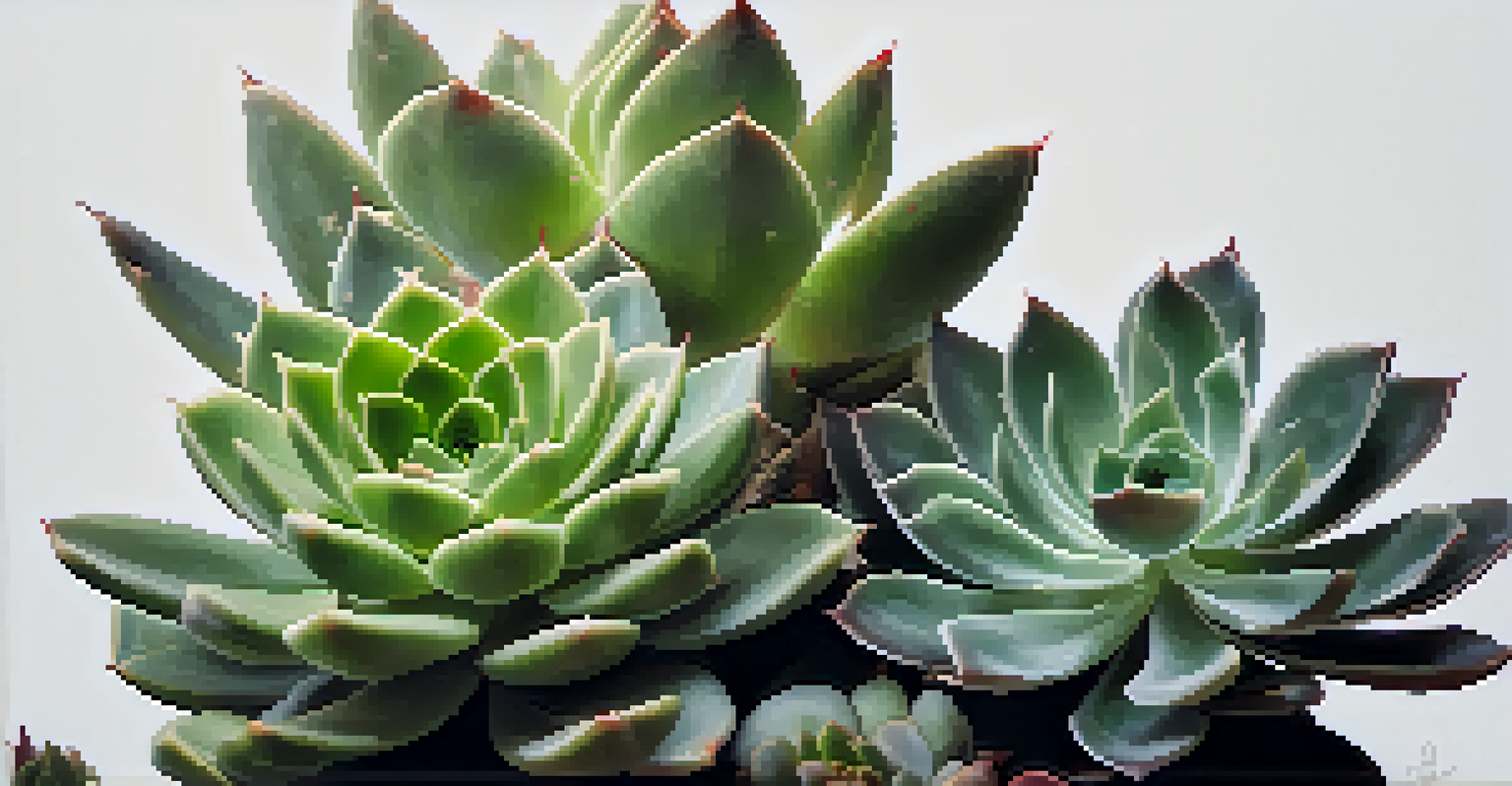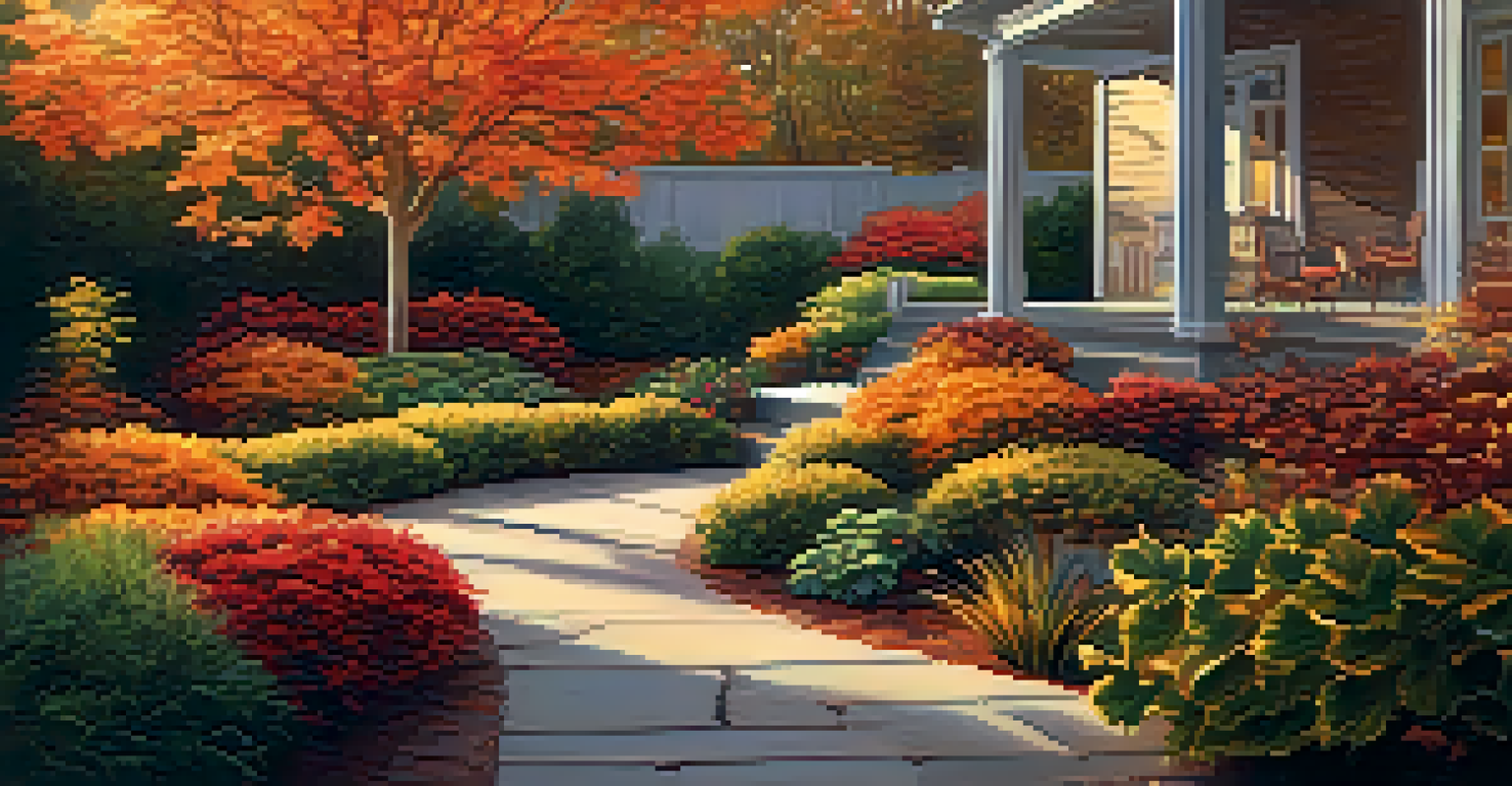Plant Color Schemes: Enhancing Design with Nature

Understanding the Basics of Plant Color Schemes
When designing with plants, color schemes play a crucial role in creating a harmonious environment. A well-thought-out color scheme can transform a dull space into a vibrant oasis. Think of it as choosing the right outfit for an occasion—certain colors just work better together.
Color is the keyboard, the eyes are the harmonies, the soul is the piano with many strings.
Each color evokes different emotions; for example, greens often signify tranquility, while reds can energize a space. By understanding these associations, you can curate a plant selection that not only looks good but also feels good. This approach is particularly beneficial in spaces like offices or living rooms, where mood matters.
Ultimately, a thoughtful plant color scheme can enhance your overall design, making it more aesthetically pleasing and inviting. So let’s dive deeper into how you can expertly blend colors through your plant choices.
The Psychology of Plant Colors in Design
Colors influence our feelings and behaviors, and this is particularly true with plants. For instance, studies show that green hues can promote relaxation and reduce stress, making them ideal for bedrooms or quiet spaces. On the other hand, vibrant colors like yellow can stimulate creativity and energy—perfect for a home office.

When selecting plants, consider the psychological effects of their colors. A mix of calming greens and energizing yellows can create a balanced atmosphere that fosters both relaxation and productivity. It’s all about finding the right blend to suit your personal or professional needs.
Color Schemes Enhance Spaces
A well-planned plant color scheme can transform any environment, making it more inviting and aesthetically pleasing.
By being mindful of the colors you incorporate into your plant design, you can create spaces that not only look beautiful but also feel harmonious. This understanding of color psychology can significantly enhance the ambience of any room.
Combining Different Colors: The Art of Contrast
Just like in painting, contrast can make a design pop when it comes to plant color schemes. Using a combination of contrasting colors can draw attention to specific areas or features in your space. For example, pairing deep green leaves with vibrant red flowers creates a stunning visual effect that catches the eye.
Nature always wears the colors of the spirit.
However, it’s essential to strike a balance; too much contrast can be overwhelming. Aim for a few focal points rather than a riot of colors. This way, you can maintain an elegant and cohesive look without sacrificing interest or depth in your design.
Experimenting with contrasting colors can be a fun way to express your personality through plant choices. So don’t hesitate to play around with different combinations until you find your perfect match!
Creating a Cohesive Color Palette with Plants
To create a cohesive look, choosing a color palette is essential. Think of it as curating a wardrobe: a few key colors that complement each other can create a unified look. For plants, you might choose shades of green paired with soft whites and striking purples or pinks, creating a serene yet dynamic environment.
One effective strategy is to select a few base colors and then find plants that showcase those hues. This approach ensures that your plant selection feels intentional and curated, rather than random. It can also help highlight certain plants that you want to showcase.
Psychological Effects of Colors
Different plant colors can evoke specific emotions, influencing mood and productivity in various spaces.
A cohesive color palette can elevate your space, making it feel more sophisticated and well thought-out. Your plants then become not just decorations but integral parts of your design story.
Seasonal Color Schemes: Adapting to Nature's Changes
Nature is constantly changing, and so are the colors of plants throughout the seasons. Embracing seasonal color schemes can keep your space feeling fresh and lively. For instance, vibrant flowers in spring can transition into the warm hues of autumn foliage, allowing you to reflect the calendar in your decor.
Adapting your plant selection with the seasons can also enhance the mood of your space. Bright flowers in summer can evoke joy, while earth tones in fall can create a cozy atmosphere. This seasonal approach can make your home feel more connected to the natural world outside.
By planning your plant arrangements with the seasons in mind, you can create a dynamic living space that evolves over time. It’s like having a new design every few months, keeping things exciting and engaging.
Utilizing Textures to Complement Plant Colors
Color isn’t the only aspect to consider in plant design; texture plays a vital role as well. Combining different textures—like smooth leaves alongside rough bark—can enhance the overall visual interest of your arrangement. This interplay of textures can make the colors stand out more vividly.
For example, pairing glossy-leaved plants with velvety succulents can create a striking contrast that captures attention. The differences in texture can add depth, making your space feel more layered and complex. It’s a subtle yet effective way to elevate your design.
Seasonal Adaptation Keeps Fresh
Embracing seasonal plant color changes can create a dynamic and engaging living space that reflects nature's beauty.
By thoughtfully considering both color and texture, you can curate plant arrangements that are not only beautiful but also engaging to the eye. This added dimension can make your space feel alive and inviting.
Practical Tips for Implementing Plant Color Schemes at Home
Implementing plant color schemes at home doesn’t have to be daunting. Start small by selecting a few key plants that fit your desired color palette. You can then gradually expand your collection as you become more comfortable with your choices. Think of it as building a collection, one piece at a time.
Consider the light conditions in your home as well; some plants thrive in bright light, while others prefer shade. This practical consideration ensures your plants not only look good but also thrive in their environment. And remember, maintenance is key—healthy plants will always look better.

Lastly, don’t be afraid to experiment! The beauty of working with plants is that you can always switch things up. Trying new combinations can lead to delightful surprises and new favorite arrangements.